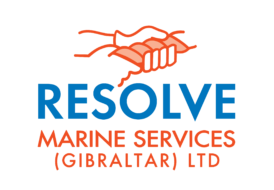News
Coral Reef Work
by
resolveadm
on December 11, 2007
0
comments
+1 954 764 8700 / + 1 954 257 2868
mlord@resolvemarine.com
FOR IMMEDIATE RELEASE
 Coral reefs are the most complex marine ecosystem in the world, but many are damaged or declining at an alarming rate. Restoring damaged reefs is important to preserving the diversity of the marine environment for future generations; at Resolve, we have the ability to not only rebuild reefs, but even to create a completely new reef at locations where they were not previously found.
Coral reefs are the most complex marine ecosystem in the world, but many are damaged or declining at an alarming rate. Restoring damaged reefs is important to preserving the diversity of the marine environment for future generations; at Resolve, we have the ability to not only rebuild reefs, but even to create a completely new reef at locations where they were not previously found.
Coral reef restoration work at the Resolve Marine Group, working with Coastal Recovery by Farrell, focuses both on building the 3 dimensional structure necessary to create marine habitat, and on maintaining stocks of live coral for transplantation. Once live coral has been placed on artificial reef structures (photo of EcoReef modules), the coral overgrows these structures (photo of live coral on EcoReef modules), gradually transforming an artificial creation into a thriving natural coral reef .
Staff Marine Biologist Dr. Michael Haley is experienced at artificial reef research and design. Dr. Haley works with University of Miami biologists to rehabilitate damaged corals and restore live corals to damaged sites in South Florida. Mike and his team have been harvesting corals growing on the Osborne Tire Reef off Ft. Lauderdale (photo of coral on tires), which consists of more than 2 million tires put down in the 1970s, and which is slated for removal. Resolve/Coastal Recovery carefully removes the corals growing on top of these tires and transports them to the University of Miami’s laboratory on Rickenbacker Cay, one of the only facilities in the country that can successfully rear and fragment corals. In the next two months, Resolve will transplant corals grown in the lab. back into the sea on a damaged site to study how this technique can help damage from ship groundings.
Resolve and Coastal Recovery also provide modifications that broaden the range of habitats available for marine life on other types of artificial reefs, such as sunken ships. Enhancing the deck space on the Texas Clipper (photo link; date), scheduled for sinking off Brownsville, Texas in early 2007, will increase fine scale habitat suitable for small and juvenile fish. At our own expense, Resolve will place ceramic reef modules at strategic locations on the deck to make the Texas Clipper a more complex and complete artificial reef. Future possibilities for this vessel include transplanting coral onto the modules on this ship.
